Control and Fault Detection and Diagnosis Algorithms
-
 PNNL and ORNL researchers will develop control algorithms for air handling units (AHU) that eliminate the need for seasonal manual performance tuning.
PNNL and ORNL researchers will develop control algorithms for air handling units (AHU) that eliminate the need for seasonal manual performance tuning. -
 LBNL and ORNL researchers are collecting and curating datasets and developing benchmarks and testing frameworks for whole building AFDD.
LBNL and ORNL researchers are collecting and curating datasets and developing benchmarks and testing frameworks for whole building AFDD. -
 CMU Researchers are using occupancy sensing and occupant feedback to drive a model predictive control (MPC) approach that targets 20% energy savings.
CMU Researchers are using occupancy sensing and occupant feedback to drive a model predictive control (MPC) approach that targets 20% energy savings. -
 NREL researchers are developing new algorithms for whole building automated fault detection and diagnosis (AFDD).
NREL researchers are developing new algorithms for whole building automated fault detection and diagnosis (AFDD). -
 U.S. and China researchers are collaborating to develop an occupant responsive model predictive control (MPC) approach that works at multiple scales.
U.S. and China researchers are collaborating to develop an occupant responsive model predictive control (MPC) approach that works at multiple scales.
Control Tools and Platforms
-
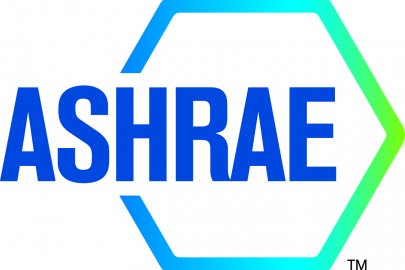 Researchers are developing a library and tool for creating, validating, and translating semantic models in ASHRAE 223P, Brick, and Haystack formats.
Researchers are developing a library and tool for creating, validating, and translating semantic models in ASHRAE 223P, Brick, and Haystack formats. -
 ConStrain is an open-source python library and API for analyzing BAS data streams and verifying that building operations comply with a specification. ConStrain can be used to ensure that buildings comply with control provisions in code.
ConStrain is an open-source python library and API for analyzing BAS data streams and verifying that building operations comply with a specification. ConStrain can be used to ensure that buildings comply with control provisions in code. -
 Project Haystack and NREL extending the popular Haystack building metadata framework with capabilities for model validation and query. These enhancements will make EMIS (energy management and information system) software easier to procure and install.
Project Haystack and NREL extending the popular Haystack building metadata framework with capabilities for model validation and query. These enhancements will make EMIS (energy management and information system) software easier to procure and install. -
 NREL and LBNL are creating a smart thermostat benchmark that uses a simulated homes rather than data collected from installed smart thermostats. Simulation-driven benchmarking has several advantages over and complements data-driven benchmarking.
NREL and LBNL are creating a smart thermostat benchmark that uses a simulated homes rather than data collected from installed smart thermostats. Simulation-driven benchmarking has several advantages over and complements data-driven benchmarking. -
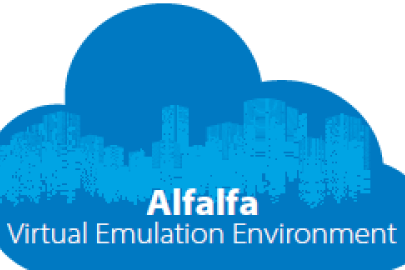 BEM engines like EnergyPlus support runtime interaction and data exchange via bespoke APIs or co-simulation. Alfalfa standardizes this capability in a familiar interface to enable hardware-in-the-loop testing, control benchmarking and other use cases.
BEM engines like EnergyPlus support runtime interaction and data exchange via bespoke APIs or co-simulation. Alfalfa standardizes this capability in a familiar interface to enable hardware-in-the-loop testing, control benchmarking and other use cases. -
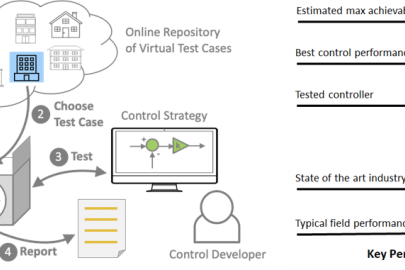 BOPTEST is an API and set of models for testing, comparing, and benchmarking building control and fault detection and diagnosis algorithms.
BOPTEST is an API and set of models for testing, comparing, and benchmarking building control and fault detection and diagnosis algorithms. -
 OpenBuildingControl is a toolkit to improve the portability and deployability of high-performance control sequences.
OpenBuildingControl is a toolkit to improve the portability and deployability of high-performance control sequences. -
 Spawn is a next-generation BEM-controls engine based on open-standards for co-simulation (FMI) and equation-based modeling (Modelica).
Spawn is a next-generation BEM-controls engine based on open-standards for co-simulation (FMI) and equation-based modeling (Modelica). -
 VOLTTRON is a lightweight, open-source platform for secure messaging and execution of programs called "agents". VOLTTRON is now part of Eclipse IoT.
VOLTTRON is a lightweight, open-source platform for secure messaging and execution of programs called "agents". VOLTTRON is now part of Eclipse IoT.
Past Projects
-
 University of Virginia researchers are using machine learning to help automate the mapping of sensor and control "points" in commercial buildings.
University of Virginia researchers are using machine learning to help automate the mapping of sensor and control "points" in commercial buildings. -
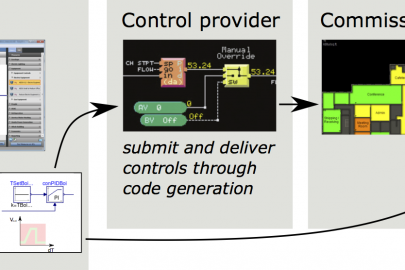 A team led by LBNL researchers is developing a toolkit to improve the portability and deployability of high-performance control sequences.
A team led by LBNL researchers is developing a toolkit to improve the portability and deployability of high-performance control sequences. -
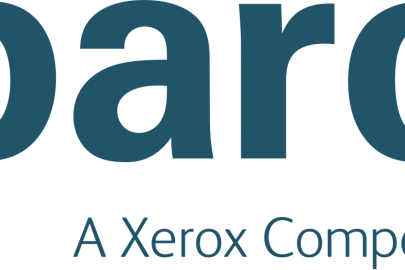 PARC researchers are using advances in Radio Frequency (RF) energy capture to reduce the need for energy harvesting and storage in wireless sensors.
PARC researchers are using advances in Radio Frequency (RF) energy capture to reduce the need for energy harvesting and storage in wireless sensors. -
 ORNL scientists are working with Molex to improve manufacturing processes for "peel-and-stick" multi-modal wireless sensor platforms.
ORNL scientists are working with Molex to improve manufacturing processes for "peel-and-stick" multi-modal wireless sensor platforms. -
 ORNL is working with FluxTeq LLC to validate a flexible BTU meter that can be mounted on the outside of a chilled or hot water pipe.
ORNL is working with FluxTeq LLC to validate a flexible BTU meter that can be mounted on the outside of a chilled or hot water pipe. -
 SLAC researchers are creating a suite of testing and debugging tools to facilitate the development of VOLTTRON agents.
SLAC researchers are creating a suite of testing and debugging tools to facilitate the development of VOLTTRON agents. -
 Virginia Tech researchers are developing an open-source distributed sensing and control platform for small to medium commercial buildings.
Virginia Tech researchers are developing an open-source distributed sensing and control platform for small to medium commercial buildings. -
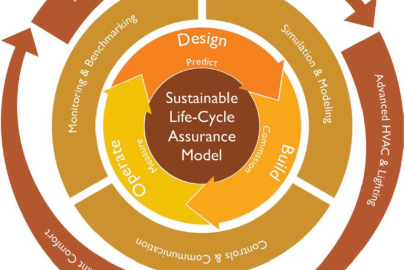 US and India researchers are working on a range of projects in the area of energy-efficient lighting and HVAC control for commercial buildings.
US and India researchers are working on a range of projects in the area of energy-efficient lighting and HVAC control for commercial buildings. -
 The U.S. and India researchers are developing a low-cost, packaged energy information system solution for commercial buildings.
The U.S. and India researchers are developing a low-cost, packaged energy information system solution for commercial buildings. -
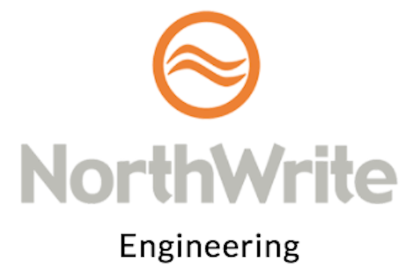 PNNL researchers are working with NorthWrite to implement retro-commissioning and fault detection algorithms for small commercial buildings.
PNNL researchers are working with NorthWrite to implement retro-commissioning and fault detection algorithms for small commercial buildings. -
 In this STTR phase I project, Dioxide Materials will commercialize its CO2 sensor by enhancing its software and communications platform.
In this STTR phase I project, Dioxide Materials will commercialize its CO2 sensor by enhancing its software and communications platform. -
 Drexel University researchers are developing a VOLTTRON-based automated fault detection and diagnosis (AFDD) system for commercial buildings.
Drexel University researchers are developing a VOLTTRON-based automated fault detection and diagnosis (AFDD) system for commercial buildings. -
 In this SBIR phase I project, Intelligent Optical Systems is developing a humidity sensor whose accuracy does not appreciably degrade over time.
In this SBIR phase I project, Intelligent Optical Systems is developing a humidity sensor whose accuracy does not appreciably degrade over time. -
 Case Western Reserve University researchers are using low-power integrated circuits and wireless communications to create a low-cost sensor platform.
Case Western Reserve University researchers are using low-power integrated circuits and wireless communications to create a low-cost sensor platform. -
 ORNL, University of Tennessee, and Richman Surrey researchers will develop non-intrusive load monitoring (NILM) for identifying EE opportunities.
ORNL, University of Tennessee, and Richman Surrey researchers will develop non-intrusive load monitoring (NILM) for identifying EE opportunities. -
 Researchers at three national labs are developing an infrared imaging occupancy sensor to support energy-efficiency HVAC control.
Researchers at three national labs are developing an infrared imaging occupancy sensor to support energy-efficiency HVAC control. -
 ORNL researchers are working with Molex to developing low-cost, low-power, wireless "peel-and-stick" sensors.
ORNL researchers are working with Molex to developing low-cost, low-power, wireless "peel-and-stick" sensors. -
 Researchers at PNNL, ORNL, and LBNL are developing open-source solutions for advanced building control, fault detection/diagnosis, and point mapping.
Researchers at PNNL, ORNL, and LBNL are developing open-source solutions for advanced building control, fault detection/diagnosis, and point mapping. -
 US and China researchers are developing and piloting a national building energy database and benchmarking tool for use in China.
US and China researchers are developing and piloting a national building energy database and benchmarking tool for use in China. -
 PNNL researchers are developing new transactive control algorithms for improving commercial building energy efficiency.
PNNL researchers are developing new transactive control algorithms for improving commercial building energy efficiency. -
 UC-Berkeley researchers are developing an open-architecture building control platform called BOSSWAVE, along with dashboards and installation tools.
UC-Berkeley researchers are developing an open-architecture building control platform called BOSSWAVE, along with dashboards and installation tools. -
 Turnkey-2013: An Extensible Sensing and Control Platform for Building Energy Management (ended 2014)A team led by CMU researchers is developing an open-source building automation system (BAS) for small and medium commercial buildings.
Turnkey-2013: An Extensible Sensing and Control Platform for Building Energy Management (ended 2014)A team led by CMU researchers is developing an open-source building automation system (BAS) for small and medium commercial buildings. -
 PNNL researchers are developing a framework for designing systems with increased energy flexibility based on system-control co-design methodology.
PNNL researchers are developing a framework for designing systems with increased energy flexibility based on system-control co-design methodology.

